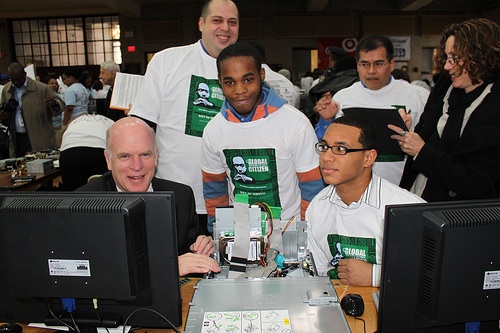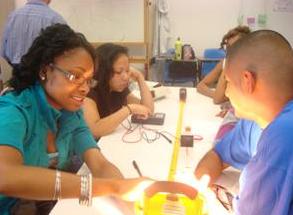Broadband Opportunities Reach Philadelphia
Freedom Rings Partnership Helps to Close Digital Divide
Guest post by Arun Prabhakaran and Mary-Anne Smith Harris of the Urban Affairs Coalition
The Freedom Rings Partnership officially kicked off on January 17th, by sponsoring the signature project of the Greater Philadelphia Martin Luther King Day of Service – volunteers refurbished used computers to be distributed to the community, assembled digital literacy kits, and participated in a high-tech scavenger hunt called “Race to Connect.” Tom Power, NTIA Chief of Staff, joined Sharmain Matlock-Turner, President and CEO of the Urban Affairs Coalition (UAC); John Fry, President of Drexel University; and Philadelphia Mayor Michael Nutter for this exciting event hosted at Girard College.
The Freedom Rings Partnership, led by UAC and the City of Philadelphia, with Drexel University as a major partner, is made up of grassroots organizations, government, and universities that are working to bring Internet access, jobs-training, and technology to Philadelphia residents in low-income communities. This initiative is a synergy between two BTOP Round 2 grants: UAC’s $11.8 million Sustainable Broadband Adoption project and the City of Philadelphia’s $6.4 million Public Computer Center project. Together, these two initiatives are known as the Freedom Rings Partnership, bringing over $25 million in federal and matching dollars to bridge the digital divide in Philadelphia.

NTIA Chief of Staff Tom Power refurbishes a computer for the Freedom Rings project with the help of Philadelphia youths

